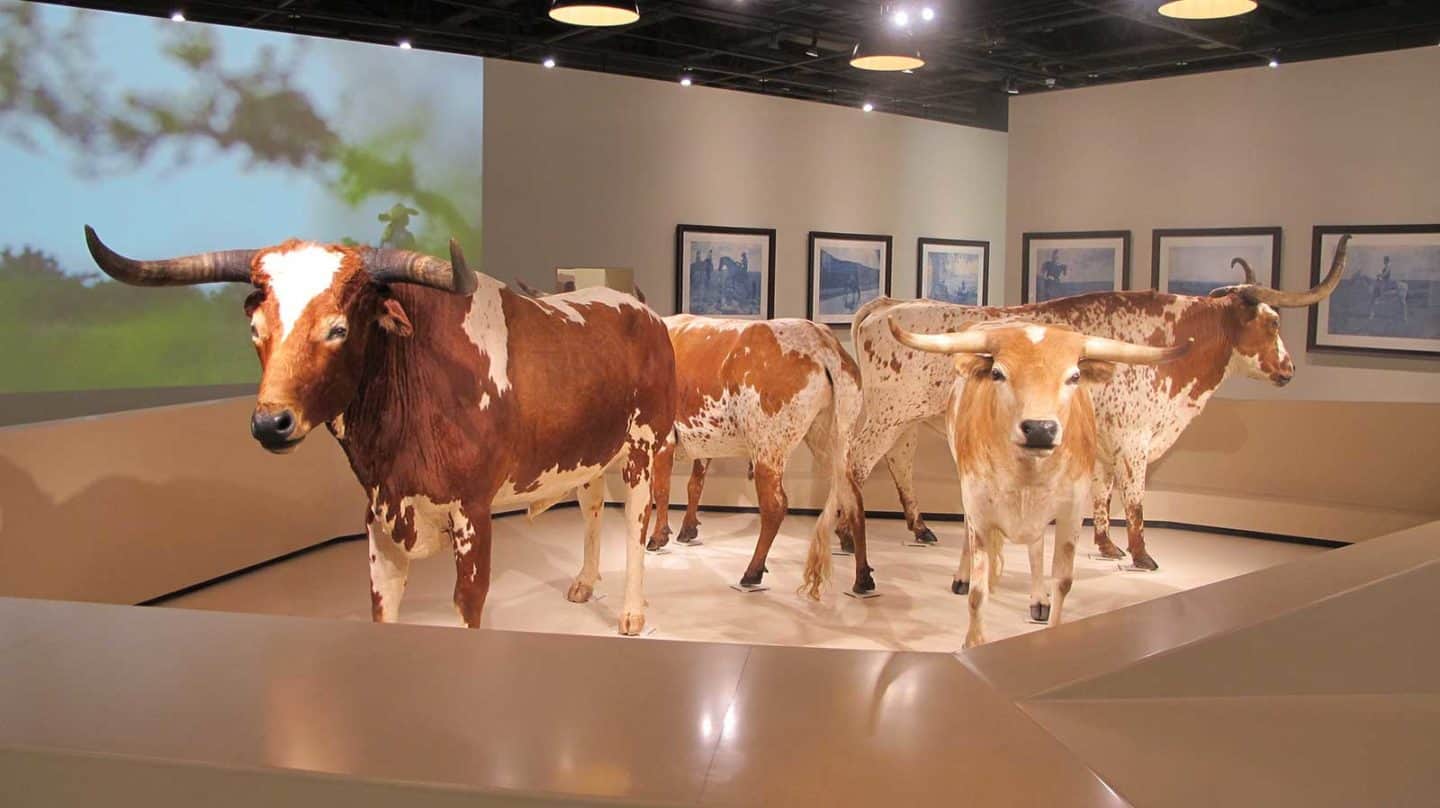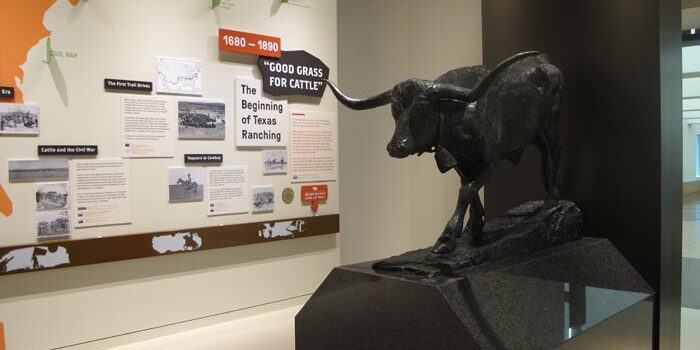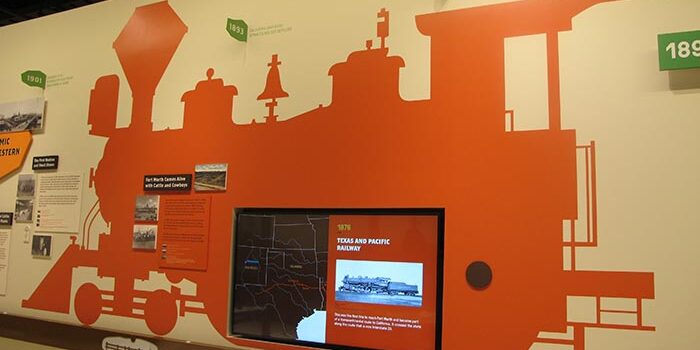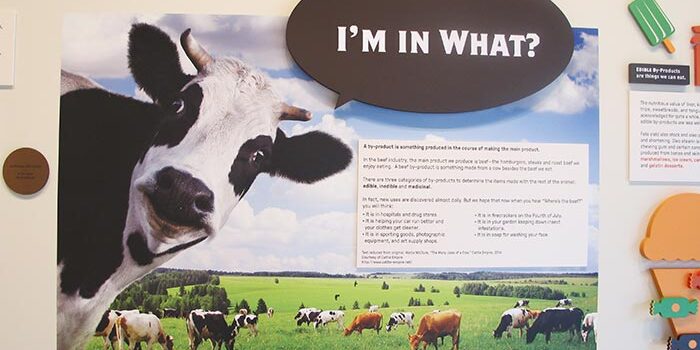Cattle Raisers Museum
Wanna Be a Cowboy? Start Here.
The Cattle Raisers Museum is dedicated to preserving and celebrating the vital history and science of the cattle industry. The experience tells the story of the cattle industry from its origins among the West’s early Spanish settlers, through the heyday of the legendary drovers, all the way to today’s modern range technology. The exhibits show the important role Texas and Southwestern cattle raisers play in protecting natural resources as frontline stewards of land, livestock and wildlife.


Good Grass for Cattle
1690-1890
Texas ranching traces its roots to 1690 when Spain introduced cattle to Texas. Cowboys soon developed tools and techniques that were adapted for working cattle. This gallery traces the development of the Texas cattle industry beginning with the “vaqueros,” the first trail drives of the 1850s, and the importance of cattle to Texas during and after the Civil War.
With the era of trail drives, beef was introduced to new markets across the country. As the cattle industry grew into a booming business, expansive ranches emerged and the Texas and Southwestern Cattle Raisers Association was formed to protect them.

Rails, Roads, Rodeos, and Rustlers
1890-1950
With the invention of barbed wire, rangelands were enclosed, the cattle drives ended, and a new way of moving cattle to emerging markets was introduced. Railroads quickly transformed cities like Fort Worth into bustling cattle markets and meat packing centers, helping to boost prices for Southwestern cattle. By the late 1890s, stock shows and rodeos were introduced to help promote sales and establish a venue for cattle raisers to better understand the value of breeding and exhibiting stock to potential buyers. Additionally, cattle theft became a greater issue, branding was introduced as a way cattle are identified to a ranch, and brand inspectors looked out for rustlers. Finally, ranching modernized with the introduction of tools, trailers and large trucks to haul cattle to distant places.

The Vision Trail
1950-Present
Innovation and technology has defined the modern era of the beef industry. Technology helped cattle raisers fight diseases such as the screwworm and provided new tools to help ranchers be stewards of the land and improve the genetics of livestock. Today, cattle raisers take full advantage of digital communications to make quicker and more efficient decisions about their herds and rangelands. As the popularity of livestock shows has grown, so also have organizations including FFA and 4-H. Consumers can feel good about the nutritional value of lean beef produced by today’s ranchers and benefit from the hundreds of edible, non-edible, and medicinal byproducts of cattle. Texas and Southwestern Cattle Raisers Association remains a strong advocate representing more than 18,000 ranching families and continues to work to stop cattle rustling through its law enforcement staff.
